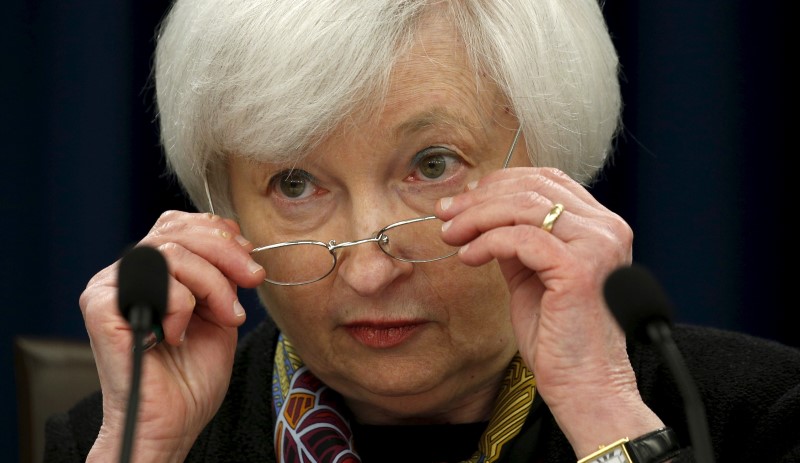By Howard Schneider and Ann Saphir
WASHINGTON (Reuters) - Rising oil prices and a more stable Chinese economy allowed the Federal Reserve to shift its focus back to the home front on Wednesday, as it signaled that U.S. jobs and inflation data would determine whether it hiked interest rates in June.
The U.S. central bank gave little hint of how it was leaning in the wake of its latest policy meeting, issuing a statement free of the forward-looking guidance it has used to massage expectations in markets and within the public.
A previous reference to global economic risks, generally seen as a red light for any rate hike, was dropped from the statement in what appeared to be an attempt to coax investors back onto a diet of U.S. economic data. That is something Fed Chair Janet Yellen and other policymakers have been trying to do for months.
In a note issued after the Fed announced it had kept rates unchanged, Barclays (LON:BARC) analysts said the central bank now "desires maximum optionality" that will allow it to hike rates at its next meeting in June without having to strongly signal it will do so.
"The Fed was trying to walk a very fine line. They wanted to leave June open ... But they don't want it to be a 100 percent (certainty) either," said Don Ellenberger, a senior portfolio manager with Federated Investors in Pittsburgh.
The Fed's focus moving ahead will be on employment, economic growth, and perhaps most importantly whether inflation begins to show any evidence of increasing from its current low level to the central bank's 2 percent target.
Since last year, Yellen has tried to push a "data-dependent" approach in which investors and households develop their sense of Fed policy from the performance of the economy, rather than through central bank statements.
Investors currently put the chances of a June rate hike at just more than 20 percent, meaning the Fed may go more than half a year between its rate hike last December - the first in nearly a decade - and the next one. That is a glacial pace.
"Whether the Fed ends up hiking in June depends on a continued gradual improvement in the labor market and wage expectations, together with relative economic and financial calm internationally," said Mohamed El-Erian, chief economic adviser at Allianz (DE:ALVG).
WEDDED TO DATA
The Fed on Wednesday also did not to refer to the so-called balance of risks that lay before the economy. That assessment, a staple of previous statements, has broadly signaled whether policymakers felt the economic landscape was likely to improve or worsen. It could also point to a rate move.
The Fed removed the reference earlier this year because policymakers felt the uncertainty surrounding China, oil prices and other global events had clouded their ability to make a definitive statement.
Its continued exclusion leaves markets even further wedded to the flow of data. Some Fed officials have suggested they would like to keep it that way.
San Francisco Fed President John Williams told reporters in March that while investors were looking for "powerful signs" of the way policy was headed, it was hard to communicate that succinctly.
"Trying to put a balance of risks up, neutral or down, is kind of like thumbs up or thumbs down ... The world is far more complicated," he said.
Jon Faust, a former Fed adviser who is now an economics professor at Johns Hopkins University, agreed with Williams and described the balance of risks language as "woefully inadequate for characterizing the situation" and "subject to misinterpretation".

"I hope it doesn't come back," Faust said.